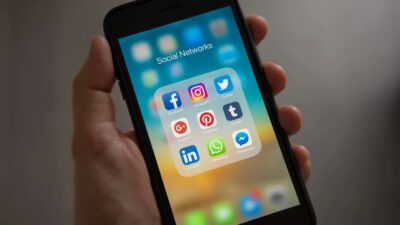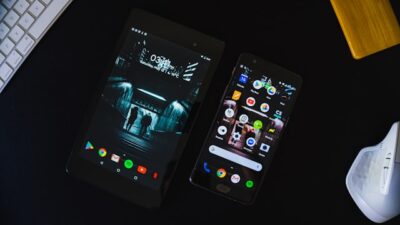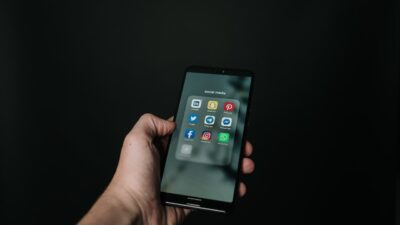Two decades ago, the top features on mobile phones were changeable ringtones and caller IDs. Despite having only 12 ringtone options, the ability to change them at will was impressive!
Mobile technology has grown tremendously since then. Smartphones today have large touchscreen displays, 4K cameras, fingerprints, and 3D facial recognition. With these features, phones have gone from simple communication devices to complex multitasking devices. You can use your smartphone to browse the internet, listen to music, watch videos, play games and even shoot professional videos for work.
Never in our wildest dreams would we have predicted this growth and the impact mobile technology would have in our daily lives. With such knowledge, it’s only fitting we look into what the future holds for mobile phone technology.
Features of Future Smartphones
Looking at concept phones, we get a good idea of the path smartphone manufacturing companies will take and how far they’ll push the boundaries. Below is a list of things you can expect from future phones.
Cameras under displays
We’ve already seen phone makers try their hand at this. While it’s exciting, there are still a lot of kinks they need to iron out with under-display cameras. The notch, shark-fin, teardrop, or hole punch in the current designs of the front-facing camera are taking up space and are quite annoying.
But this doesn’t stop them from attempting to improve the technology making it free of disturbances and glitches. In good time, they’ll hide the front-facing camera completely, providing a clean edge-to-edge display. This will be great news for those who love streaming movies and TV shows on their phones.
However, this improvement will complicate the phone’s design making it harder to repair. Despite the complexities of the present and future smartphones, Repairs Bay will always do a good job.
Wireless charging and zero ports

Wireless charging has been around for over a decade and has significantly improved efficiency. Despite this, users don’t find it practical enough to use on a daily basis. But as wireless charging speeds continue to increase, it’s likely they may push out charging cables in the coming years.
Instead of leaving your phone plugged in for long hours before it’s fully charged, fast wireless charging does it in 15 minutes. With wireless technology getting closer and closer to becoming mainstream, ports will have no use. The fact that they get clogged with dirt, get damaged, and eventually stop working helps the case for wireless technology.
And with most brands dropping the 3.5mm headphone jack port, we are closer to zero-port smartphones than we think.
Foldable phones
Foldable phones are an upgrade from flip phones. We’ve seen this technology in the Samsung Galaxy Fold, the Galaxy flip series, and other Motorola and Huawei phones. However, their inconsistency in quality and the high price tag has put off many people this far.
Some of the quality issues foldable phones are facing include:
- Weak main screen – the soft and flexible front panels are still prone to dents and scratches
- Crease – constant folding and unfolding leaves a visible crease on the screen, which can degrade the user experience
- Air gap – foldable phones aren’t folding perfectly flat to avoid breaking the screen. As a result, air, water, and dust pass through, making them susceptible to damage. On the bright side, the Huawei Mate X2 has done a great job closing this gap, getting closer to a perfectly flat close.
- Poor battery performance – the hinges often use up a lot of space at the expense of battery capacity. Unlike regular phones, you’ll have a harder time getting through the day on a single charge.
As mobile tech companies work on getting this technology reliable and the prices drop, there’s a good chance they’ll go mainstream.
Holographic display

Holograms are a common feature in sci-fi films like Ironman and Star Wars. Recent smartphone prototypes show that the technology won’t be reserved for TV shows for too long. The HoloFlex prototype by Queen’s University researchers proves this too.
HoloFlex is a flexible and holographic which allows users to bend the device to view the 3D display from a different angle and interact with different images on the screen. Marketed as the first flexible and holographic smartphone, HoloFlex is still being developed and isn’t due for launch soon.
Educational tools
How the number of people glued to phone screens, and the rate of mobile phone technology, it’s safe to assume that smartphones will affect how we teach and learn. With 1-in-3 children in schools having access to mobile phones, a future where voice recorders and cameras are used in teaching and learning is likely.
So far, we’ve seen education facilities using text messages to alert guardians and parents of student truancy and progress. As camera technology improves, we inch closer and closer to this reality.
Refurbished and eco-friendly

Over the past millennium, the earth has taken a huge beating from human activities. In this 21st century, governments, companies, and people are more environmentally conscious. Brands, including phone makers, seek ways to make their products environmentally friendly. Researchers are busy coming up with cleaner energy charging and sustainable materials.
With eco-friendly phones such as Ecophone on the rise, phone manufacturers are actively taking steps to achieve Neo Zero status by the year 2050.
Aside from this, refurbished phones are increasing in popularity too. Gone are the days when they were considered poor quality and untrustworthy. Today, there are companies dedicated to reclaiming and reselling refurbished phones in different conditions. Refurbished phones leave less impact on the environment as they reduce emissions.
Color-changing
Phones come in different colors. Choosing the best can be a struggle. Silver, black, and white can be boring. Purple, green, and red stand out more, but they reduce the professional look. With future smartphones, you won’t have.
Instead, they’ll feature a transparent glass-like back that absorbs light and have multiple LED lights inside. You’ll change the phone color from the settings or with your mind. The back cover will absorb the light to give an even-painted look.
Bottom Line
In the not-so-distant future, the sci-fi movies and tv shows we love will be our reality. There are too many tech features brands can push boundaries on to definitively present you with the future phone. All that’s clear so far is that cell phones in the future will be different.









